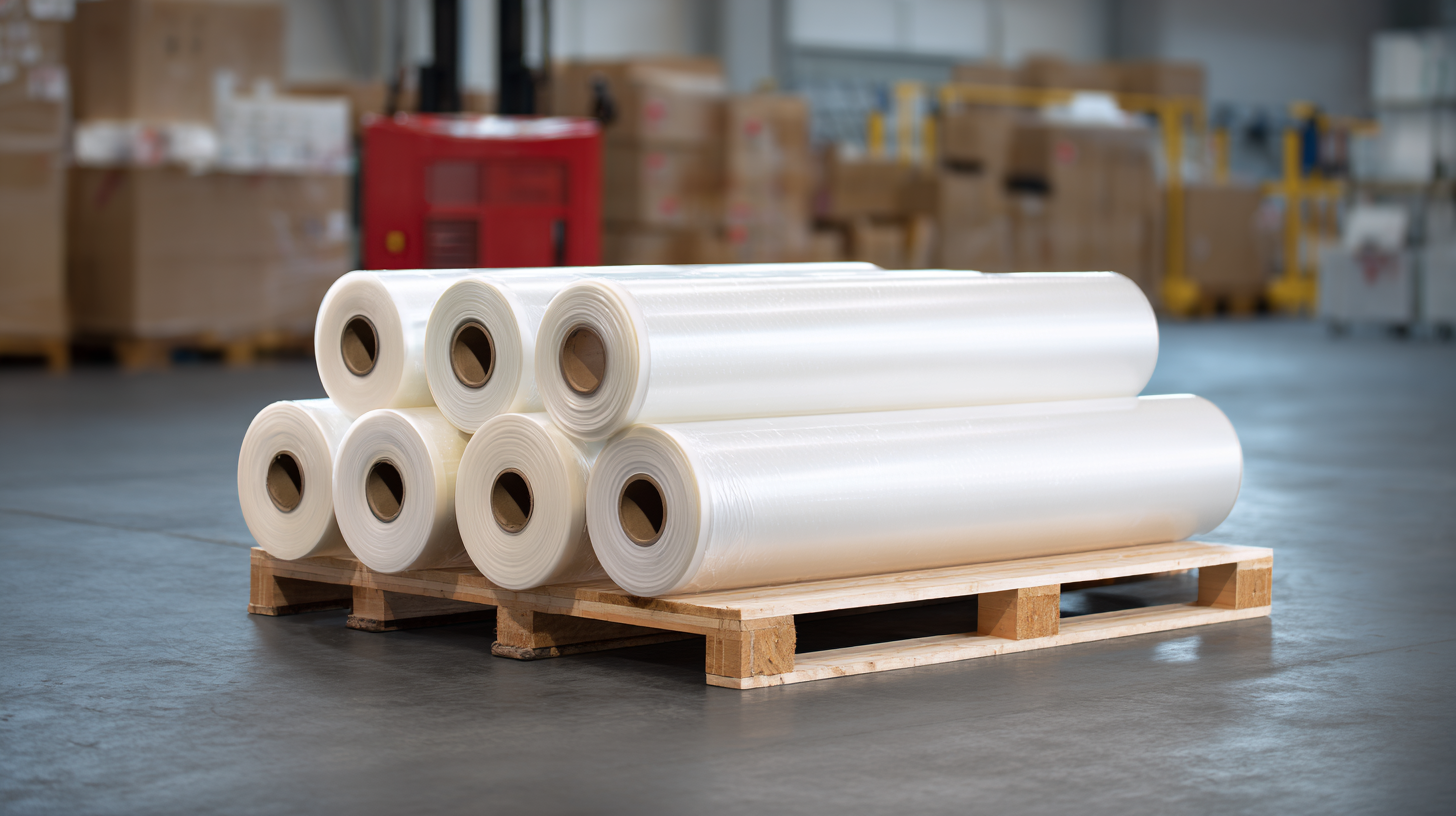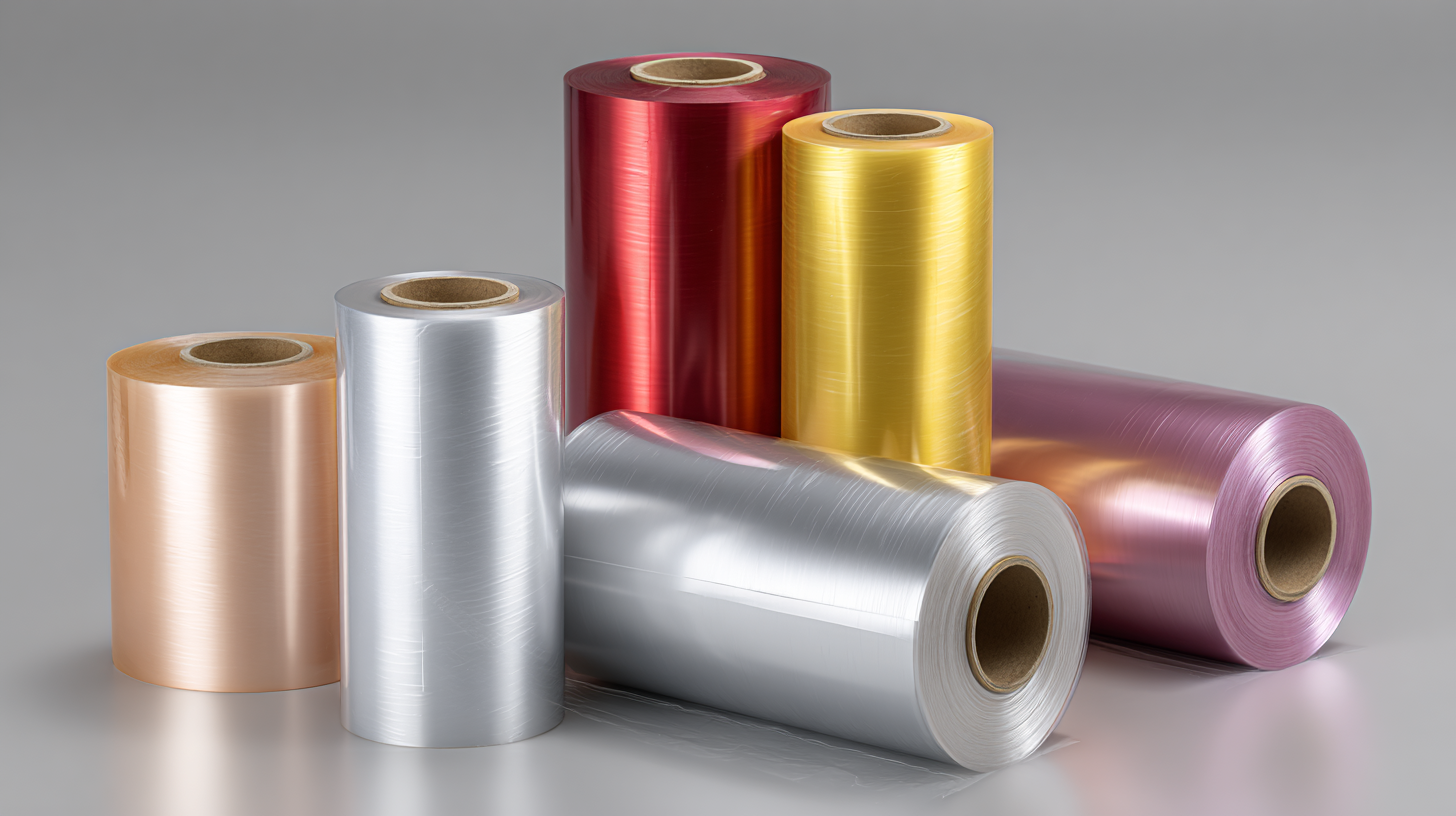Shrink wrap has emerged as a vital packaging solution across various industries, celebrated for its versatility and robust protective qualities. According to a recent market report by Grand View Research, the global shrink wrap market size is projected to reach USD 10.96 billion by 2025, growing at a CAGR of 4.5%. This surge reflects an increasing demand for cost-effective and efficient packaging methods, particularly in sectors like food and beverage, consumer goods, and pharmaceuticals.

As businesses seek to enhance product safety and reduce spoilage, the application of shrink wrap offers significant advantages, including tamper resistance and protection against moisture and dust. However, with the variety of shrink wrap materials and types available in the market, choosing the right one can be daunting. This blog will explore the distinctive features and uses of the best shrink wrap options available, along with practical tips on selecting the ideal type for your specific needs.
Shrink wrap is an innovative packaging solution that caters to a wide range of industries, including food, manufacturing, and e-commerce. This versatile material comes in several types, each with its unique features tailored to specific applications. According to a recent market report by Grand View Research, the global shrink wrap market size is projected to reach USD 11.5 billion by 2025, highlighting its increasing adoption across various sectors due to its durability and cost-effectiveness.
There are predominantly three types of shrink wrap: PVC, Polyolefin, and LDPE. PVC shrink wrap is favored for its affordability and clarity, making it an excellent choice for retail packaging. Polyolefin, on the other hand, is noted for its superior strength and resistance to punctures and tears, making it ideal for food packaging and products that require a higher level of protection. Lastly, LDPE shrink wrap is known for its stretch and flexibility, providing a more eco-friendly option for businesses looking to minimize their plastic footprint. Understanding these types allows businesses to choose the right shrink wrap that meets both their practical needs and sustainability goals.
| Shrink Wrap Type | Material | Thickness | Uses | Unique Features |
|---|---|---|---|---|
| PVC Shrink Wrap | Polyvinyl Chloride | 75-200 microns | Packaging, Palletizing | High clarity, strong seal |
| PE Shrink Wrap | Polyethylene | 50-150 microns | Food packaging, Bundling | Cost-effective, recyclable |
| PP Shrink Wrap | Polypropylene | 40-120 microns | Retail packaging, Labeling | High gloss finish, UV resistant |
| Crosslink Shrink Wrap | Crosslinked Polyolefin | 50-200 microns | Heavy duty applications | Superior strength, heat resistant |
| Bundling Film | Various plastics | Thickness varies | Bottling, Building materials | Flexible, customizable sizes |
 Shrink wrap is widely utilized across various industries due to its versatility and effectiveness in packaging and protection. In the food and beverage sector, shrink wrap serves as an essential solution for preserving freshness and extending shelf life. By tightly sealing products, it protects against contaminants and moisture, ensuring that items remain safe and consumable for longer periods. Additionally, brands often use shrink wrap to bundle products together, providing convenience for consumers while enhancing display aesthetics.
Shrink wrap is widely utilized across various industries due to its versatility and effectiveness in packaging and protection. In the food and beverage sector, shrink wrap serves as an essential solution for preserving freshness and extending shelf life. By tightly sealing products, it protects against contaminants and moisture, ensuring that items remain safe and consumable for longer periods. Additionally, brands often use shrink wrap to bundle products together, providing convenience for consumers while enhancing display aesthetics.
In the manufacturing and shipping industries, shrink wrap plays a crucial role in safeguarding goods during transit. It is commonly applied to pallets, securing multiple items together to prevent movement and reduce the risk of damage. Shrink wrap is also favored for its lightweight nature, as it does not add significant weight to shipments, thus optimizing transportation efficiency. Furthermore, sectors such as construction and warehousing leverage shrink wrap to protect materials and equipment from environmental factors, ensuring that items remain in optimal condition until they are needed.
When selecting the right shrink wrap for your packaging needs, it’s essential to consider the specific materials and applications that will best serve your product. Polyethylene (PE) and polypropylene (PP) are among the most commonly used materials in shrink wrap. PE is known for its durability and flexibility, making it ideal for a variety of applications, including food packaging and industrial uses. Meanwhile, PP offers excellent clarity and resistance to moisture, which is crucial for products where visibility is essential.
The flexible plastic packaging market is projected to see substantial growth, with a market size expected to reach $464.4 billion by 2032, driven by the increasing demand for efficient and sustainable packaging solutions. This is evidenced by the rising adoption of technologies like blow molding and injection molding in producing these shrink wraps. Additionally, specialized sectors such as medical and food packaging are on the rise, with the sterile medical packaging market alone anticipated to grow from $512.1 billion in 2024 to $917.1 billion by 2032, highlighting the importance of selecting the right type of shrink wrap that adheres to regulatory standards and meets safety requirements.

When selecting shrink wrap, it's crucial to focus on quality assurance in the manufacturing process. With the alarming increase in plastic production, which has surged from just two million tonnes in 1950 to over 450 million tonnes today, understanding the quality of shrink wrap materials is more important than ever. A rigorous manufacturing process, along with the proper quality control measures such as mechanical testing, ensures that the shrink wrap not only performs effectively but also minimizes environmental impact. Consumers should look for products that demonstrate compliance with established quality standards to ensure durability and effectiveness.
Additionally, the integrity of the seal in shrink wrap applications can be significantly affected by the quality of the materials used. Research has shown that heat sealing techniques play a vital role in the performance of flexible packaging materials. By choosing shrink wrap from manufacturers that prioritize quality assurance and environmental responsibility, consumers can make informed choices that contribute to sustainability while maintaining the effectiveness of their packaging needs. As the landscape of plastic production evolves, selecting high-quality shrink wrap becomes essential for both practical applications and environmental stewardship.
In recent years, the role of Chinese manufacturing in the global shrink wrap supply chains has become increasingly significant. China, being one of the largest producers of shrink wrap materials, offers a vast array of options that cater to various industries, from food packaging to electronics. The competitive pricing and high efficiency of Chinese manufacturers have positioned them as key players in this market. Businesses around the world are now relying on these manufacturers not only for volume but also for innovative materials that enhance durability and user-friendliness.
When selecting the right shrink wrap for your needs, consider the type of product you are packaging. Different materials cater to different requirements; for instance, polyethylene is excellent for food items due to its moisture-resistance. Additionally, evaluating the supplier’s reliability and production capabilities in China can significantly affect your supply chain efficiency. Always request samples before committing to a large order to ensure the quality meets your expectations.
It's also wise to stay updated on global trends, as these can influence the availability and pricing of shrink wrap materials. Attending industry trade shows or following relevant online forums can provide valuable insights. Networking with businesses that have experience in sourcing from Chinese manufacturers can offer practical tips and shared experiences that can further streamline your selection process.
